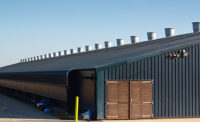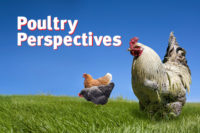More than a decade ago, animal agriculture secured a hard-fought reporting exemption under two chemical release laws, the Comprehensive Environmental Response Compensation and Liability Act (CERCLA), passed in 1980, and the Emergency Planning and Community Right to Know Act (EPCRA), passed in 1986.
On April 11, 2017, the U.S. Court of Appeals for the D.C. Circuit vacated this exemption, tortuously dragging animal agriculture back into pointless reporting requirements. Animal agriculture needs to be aware of and develop a comprehensive plan to address this adverse decision. The good news is that the fundamental basis for granting the exemption continues today:
• Emissions from poultry houses pose little or no risk to public health. In the last 10 to 15 years, significantly more research on emissions from modern animal agriculture housing systems, including poultry housing, has been conducted. The industry participated in the “Air Consent Agreement” (ACA) that generated data across the country. “Look up” tables were originally envisioned under the ACA, but the reality proved far too difficult for “look up” tables. But on the other hand, research such as “Ammonia Outside of Broiler Houses” (Fairchild, et al, 2009 J Applied Poultry Research, IS: 630-639), demonstrated that a mere 200 feet from a broiler house fan exhaust, mean ammonia concentrations were below 1.6 ppm all of the time, well below levels for human concern or occupational exposure limits.
• Emergency response to releases from poultry houses isn’t feasible. Under these laws, if a poultry facility releases 100 pounds of ammonia in 24 hours — the most likely case for a poultry facility — emergency reporting requirements kick in. The farmer is required to notify the National Response Center (NRC), as well as the State Emergency Response Commission (SERC), and if appropriate, the Local Emergency Planning Committee (LEPC) — all as soon as possible. But the next question is: What will happen at the farm after such a report? And the answer, still today, is that absolutely nothing will happen. The local fire department or SERC is not going to send out its fire truck or hazardous-materials response team, or anything else, in response to the gradual release of ammonia from manure breakdown on a chicken farm over the prior 24 hours.
• Emergency reporting would unnecessarily burden state and local response systems. The sheer volume of calls to the NRC, SERCs and LEPCs would stress those systems, and more importantly, divert resources from an actual event that does immediately threaten the health and welfare of the general public, where an emergency response is required.
• Emergency Response unnecessarily burdens poultry producers who are predominantly relatively small, family-owned and -operated farms. Imagine the poultry farmer now having to make a daily decision whether the RQ (Reportable Quantity) for ammonia was exceeded from a facility and then documenting the decision to report in case there is a later lawsuit. Remember, there are no “look up” tables as envisioned by the ACA. The producer is placed in the position of making an engineering extrapolation which may or may not be accurate for a given farm on a given day, and the consequences and penalties of an incorrect calculation — despite the best of intentions — could easily undermine the farm’s fiscal future.
The Environmental Protection Agency (EPA) argued similar points as cited above in the court case just completed, defending the validity of this exemption. U.S. Poultry & Egg Association and the National Pork Producers Council intervened in the case to ensure animal agriculture was heard, but ultimately the efforts to defend the exemption fell short, and these reporting requirements may soon be felt by all U.S. animal producers.
This is a case in which the additional regulatory burdens, while garnering no quantifiable environmental benefit, will most certainly put a cost on the producer. The irony here is that the environmental plaintiffs bemoan “Big Ag” and “factory farms.” Yet, larger producers are more capable of affording services needed to comply with this regulation than the smaller producer. So, in the end, which operation is going to be more efficient, more capable of remaining viable? The answer, of course, is the larger producer — exactly opposite the intended effect for the plaintiffs.
Stay tuned as animal agriculture tries to untie this knot yet again. NP




Report Abusive Comment